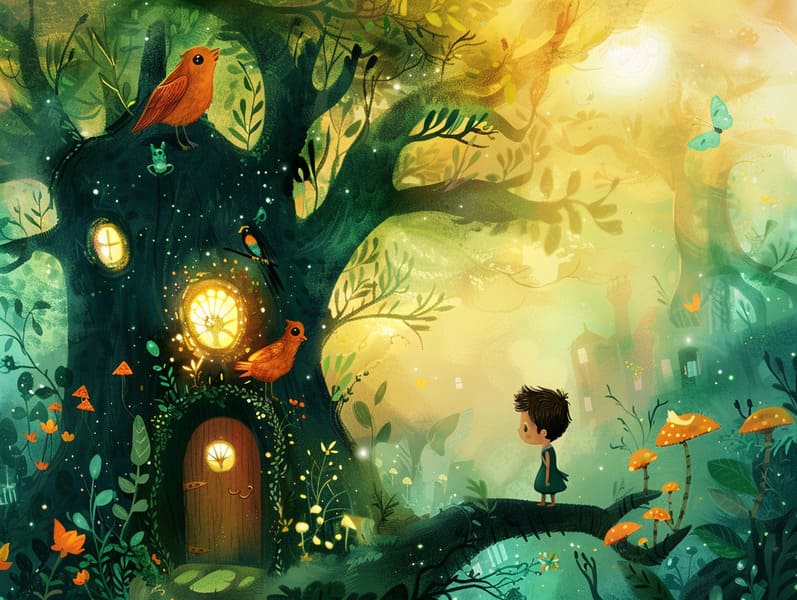Understanding the Legacy of Old Fairy Tales with the Invariable Attraction.
Understanding the Legacy of Old Fairy Tales with the Invariable Attraction.
Blog Article

Fairy tales for kids have historical significance. These narratives have been passed down from one generation to the next far before they were ever recorded. They were born from a variety of backgrounds, including Indigenous traditions. They were initially disseminated among older generations, often carrying themes and messages relevant to the societal norms and beliefs of the time.
The Brothers Grimm, Jacob and Wilhelm (the Grimm brothers), were among the first to gather many of these beloved tales. Their compilation, "Grimm's Fables," included narratives like "Cinderella," "Little Brother and Little Sister," and "Snow White," which have since become mainstays in the world of traditional fairy tales. Similarly, H. C. Andersen's whimsical narratives, such as "The Sea Maid," and "The Little Duckling," have touched hearts worldwide, establishing their place in the pantheon of treasured fairy tales.
Though they are centuries old, these stories remain as relevant as ever, especially as bedtime stories for kids. These fantastical tales are now available in multiple formats, including colorful picture books, charming animations, and web-based fairy tales.
Their persistent charm can be credited to several fascinating points:
Significant Morals: Classic fairy tales often share important moral lessons. Stories like "The Boy Who Cried Wolf" teach the importance of integrity, while "The Tale of the Tortoise and the Hare" exemplify the values of tenacity and humility. These stories offer young ones clear distinctions between virtue and vice, developing their moral compass in a kind yet deep way.
Compassion and Knowledge: Traditional fairy tales frequently portray heroines facing problems and hurdles, encouraging young readers to connect with their struggles and cheer for their triumphs. For instance, "The Tale of Beauty and the Beast" highlights the merit of seeing beyond the surface to perceive the inner core of a being, cultivating tenderness and insight.
Cultural Understanding: Many fairy tales are rich in the cultural contexts from which they grew. Immersing in these stories can provide delightful insights into different beliefs, nurturing a sense of world insight and comprehension.
Fantasy and Imagination: The fanciful elements in classic fairy tales—wizardry and magic—kindle children’s imaginative ideas. These stories transport readers to supernatural realms, stimulating creative ideas and a sense of delight that stays a lifetime.
Ancient fairy tales are not only enchanting but also educational. They function as bewitching tools in building various thinking and feeling skills in young readers. When old fairy tales are read aloud, they develop language development by showing new language items and detailed sentence structures. This practice also improves hearing abilities and focus, as young readers keep up with the story, keen to see what happens next.
Furthermore, reflecting on the themes and characters of traditional fairy tales can sharpen intellectual skills and logical thinking. Young ones are guided to recognize patterns, predict happenings, and comprehend cause and effect. These reflections also advance little ones say their thoughts and feelings, boosting their emotional intelligence.
In today’s technological era, the prevalence of online fairy tales has made these fairy tales more accessible than ever. Websites and applications feature broad selections of classic fairy tales that can be viewed or listened on anytime, anywhere. Fairy tales recited are particularly sought after, sharing an charming way for young readers to take part in these fantastical tales. Narrated books and read-out-loud videos take characters and settings to life, often enhanced by whimsical sound effects and background music that boost the tale experience.
The unfading fascination of classic fairy tales lies in their ability to transform to modern times while sustaining their underlying messages. Contemporary takes of these fairy tales often incorporate more varied characters and modern settings, making them understandable to today’s audience. However, the key lessons of fortitude, warmth, and fair play remain unchanged, continuing to impact children of all ages.
Classic fairy tales also offer a sense of assurance and knowability. They bring a coherent narrative with a obvious beginning, middle, and end, often coming to a close with the culmination of conflicts and the triumph of goodness over badness. This consistency can be soothing for young readers, imparting a sense of firmness in an variable world.
Ancient fairy tales continue to charm and inform new generations, maintaining their fascination and meaningfulness in modern society. As children's night stories, they confer a perfect blend of wonder and wisdom, enriching moral values, empathy, and creativity. The existence of digital fairy tales and the in demand status of fairy tales read out loud assure that these old stories remain obtainable to new generations.
By defending and distributing these fairy tales, we continue to celebrate the rich tapestry of fantasy and cultural heritage. Whether you are accessing a colorful picture book, seeing a internet collection, or listening through an audio story, the grace of bedtime fairy tales is always website within reach. These narratives reveal of the endless influence of stories and its ability to unite us across epochs and places.
No matter if you are experiencing a beautifully illustrated book, seeing a cyber library, or playing an spoken story, the fascination of children's fairy tales is always within reach.
These narratives demonstrate of the immortal essence of fairy tales and its ability to bind us across eras and regions, establishing a link that charms and informs alike.